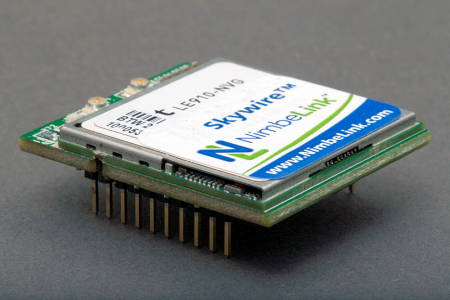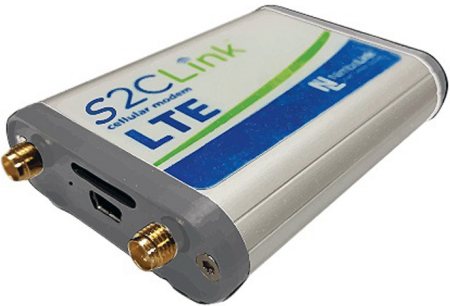
The Internet of Things (IoT) and machine-to-machine (M2M) connectivity are today's fastest growing technologies, and both depend on the connections between systems and sensors. There are a variety of ways to make those connections, but none is more effective overall than the cellular network. Today's cellular is:
- Simple
- Available
- Fast to market
- Reliable
- Secure, and
- Affordable
Point One for Cellular: Simplicity
As anyone with a cellphone can tell you, cellular-enabled devices are easy for users to deploy. They arrive fully provisioned and can be used immediately. That's far from true of devices using Wi-Fi or other connection technologies, which require often-complex setup and in some cases may not even be allowed on the local network by cautious IT departments. Even if they are allowed they may have to wait in line with other items in IT's queue.
Cellular, on the other hand, is simple and getting simpler. For example, LTE's high-bandwidth service is now being augmented with LTE Cat 0, which is ideal for many M2M applications. Cat 0 reduces the complexity of the LTE modem, has a peak data rate of 1 Mbps in both downlink and uplink, and requires significantly less power for operation.
Point Two for Cellular: Availability
Cellular service is available almost everywhere, largely because cellular companies compete on the basis of availability. As a result, service can be found in cities, suburbs, rural areas, on the road and, increasingly, inside malls, subways, and similar venues. That means that wherever a cellular device is located, or wherever a mobile application may travel, it still can access the network.
Other connectivity options like Wi-Fi have scattered local availability, have to be set up if they are not already in place, have short ranges where they do exist, and certainly can't serve mobile applications. In fact, the only option that really competes with cellular for coverage is satellite, which is extremely expensive and relies on cumbersome outdoor antennas.
Point Three for Cellular: Faster Times to Market
For developers with plenty of time and resources, cellular modules can be designed right into the circuitry of a device. Then all the necessary FCC and carrier certifications can be obtained, although the process can take months and cost tens of thousands of dollars.
For those more concerned with speed to market, however, NimbeLink offers pre-certified, miniaturized cellular modems—2G, 3G, and LTE—that can plug right into a circuit board to eliminate a lot of development cost, all the cost of certification, and much of the delay in designing in and certifying bare-bones cellular modules.

A mini, pre-certifies cellular modem can plug right into the circuit, saving time, space, and assorted costs.
Next page
Point Four for Cellular: Reliability
Cellular networks rarely fail. network providers start losing money the minute a problem occurs, so they build multi-level, fail-safe capabilities into their networks. Their through-the-air connections aren't subject to vandalism or weather, and because there are no customer-premise routers, a major source of breakdown is eliminated.
Briefly put, cellular isn't subject to the kind of glitches that can affect Wi-Fi, cable, phone lines, or other customer-premise systems. The biggest potential problem for the remaining on-premise device is loss of power, and that can easily be addressed with battery backup.
Point Five for Cellular: Security
The cellular network is inherently secure. The Internet, on the other hand, gets hacked all the time. If data is going to traverse the web, you may want to encrypt the message before sending it via http:, leaving it visible to eavesdroppers but hiding the contents.
An alternative is to essentially send data through an opaque pipe using https: to provide temporary encryption based on a handshake between sending and receiving nodes. This kind of security can be provided with a Linux-based operating system running on processors like the AM335x in the Beaglebone microprocessor. However, this can be tricky with simpler, less expensive microprocessors like the STM32 F4 series. NimbeLink has solved that problem with the NimbeLink Plug-in Cellular Cape for the Nucleo-F401RE, which lets users take advantage of the mbed development platform and libraries.
Point Six for Cellular: Affordability
Cellular is, in general, a reasonably priced service, which varies in cost with the amount of data being sent, and cellular plan prices are trending lower. Systems sending occasional alerts can use low-cost 2G modems and low-cost data plans.
Systems that stream data or send it in large, frequent batches can use 3D or high-speed LTE modems and higher-capacity data plans. And in a fast-changing market, the ability to configure pre-certified embedded modems allow developers to beat the competition to market and maximize their margins.

LTE modems handle streaming data or large packets of data sent frequently.
Conclusion
For in-home applications, over short distances, and where reliability isn't critical, Wi-Fi is a convenient networking option. But on the growing Internet of Things, where reliability and security matter and connections can be across town or across the country, Wi-Fi is rapidly going the way of the corner payphone and being replaced by the Everywhere, Always There Cellular Network.
About the Author
Scott Schwalbe is the CEO of Nimbelink. He has a history of building profitable businesses and successful teams, with 15 years executive leadership experience. In addition to serving in the US Navy, he has held executive-operations and business-development roles at Celestica, HDM and Logic PD. Scott holds an MBA from Cardinal Stritch.
Related Stories
Shortcuts to the M2M Marketplace
Ultra-compact Global 3G/2G Cellular Module Ideal for Tracking and IoT Applications